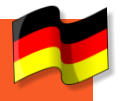
















Made in Dingolfing after WWII by Glas

Goggomobil T400 - 1959
Goggomobil was a series of microcars produced in the
Bavarian town Dingolfing after World War II by Glas.
Glas produced three models on the Goggomobil platform: the Goggomobil T sedan, the Goggomobil TS coupé, and the Goggomobil TL van. The engine was an air-cooled, two-stroke,
Goggomobil TS coupé, and the Goggomobil TL van. The engine was an air-cooled, two-stroke, two-cylinder unit originally displacing 250 cc, but later available in increased sizes of 300 cc
two-cylinder unit originally displacing 250 cc, but later available in increased sizes of 300 cc and 400 cc. It had an electric pre-selective transmission built by Getrag and a manual clutch.
and 400 cc. It had an electric pre-selective transmission built by Getrag and a manual clutch. The engine was behind the rear wheels. Suspension was independent all round using coil
The engine was behind the rear wheels. Suspension was independent all round using coil springs with swing axles.
springs with swing axles. 214,313 sedans, 66,511 coupés, and 3,667 Transporter vans and pickups were built from 1955
214,313 sedans, 66,511 coupés, and 3,667 Transporter vans and pickups were built from 1955 to 1969.
to 1969.
T Sedan
The Goggomobil T250 was introduced by Glas at the 1954 IFMA international bicycle and motorcycle show. The T250 was a conventional-looking two door sedan with a rear-mounted
motorcycle show. The T250 was a conventional-looking two door sedan with a rear-mounted 245 cc air-cooled two-stroke straight twin engine.
Design changes were made to the T250 in 1957. Two windshield wipers were used instead of
245 cc air-cooled two-stroke straight twin engine.
Design changes were made to the T250 in 1957. Two windshield wipers were used instead of the earlier system with one wiper, and the sliding windows in the doors were changed to
the earlier system with one wiper, and the sliding windows in the doors were changed to wind-up windows. Also at this time the T300 and T400 became available; these had larger
wind-up windows. Also at this time the T300 and T400 became available; these had larger engines of 300 cc and 400 cc respectively.
The last design change for the T sedan came in 1964, when the rear-hinged suicide doors
engines of 300 cc and 400 cc respectively.
The last design change for the T sedan came in 1964, when the rear-hinged suicide doors were replaced by conventional front-hinged doors.
214,313 sedans were built when production ended on 30 June 1969.
were replaced by conventional front-hinged doors.
214,313 sedans were built when production ended on 30 June 1969.

1959
 Engine
395 cc
2 cylinders
Power
19 HP
Lenght/width
2,9 m/1,28 m
Weight
413 kg
Engine
395 cc
2 cylinders
Power
19 HP
Lenght/width
2,9 m/1,28 m
Weight
413 kg
 The collections red 1959 Goggo was
bought from Germany.
The collections red 1959 Goggo was
bought from Germany.



Photos mainly by Matti Kreivilä. Historical facts and technical details of the vehicles provided by Wikipedia. Movies YouTube.










